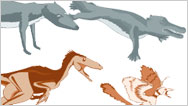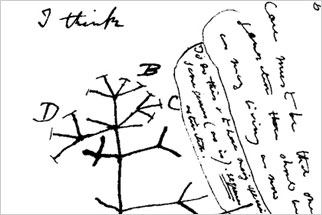Related Links
-

Fossil Evidence
Examine five transitional species that fill so-called gaps in the fossil record.
-

Creature Courtship
Why do males expend such time and energy to find a mate? Because of a little force of nature known as sexual selection.
-

The Zoo of You
In this interactive, see how closely parts of your body match those in other animals, from sharks to fruit flies.
-

Becoming Human Part 1
First Steps: Six million years ago, what set our ancestors on the path from ape to human?
Close
You need the Flash Player plug-in to view this content.


